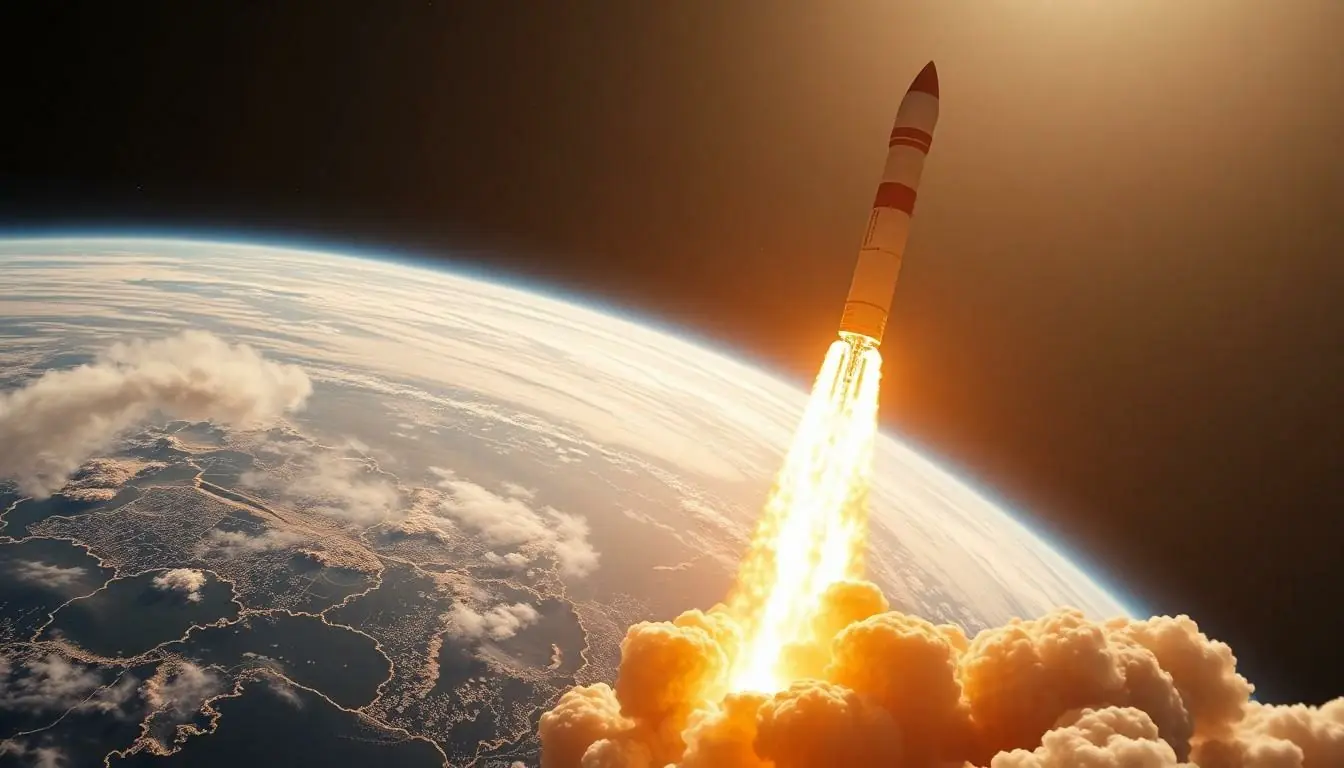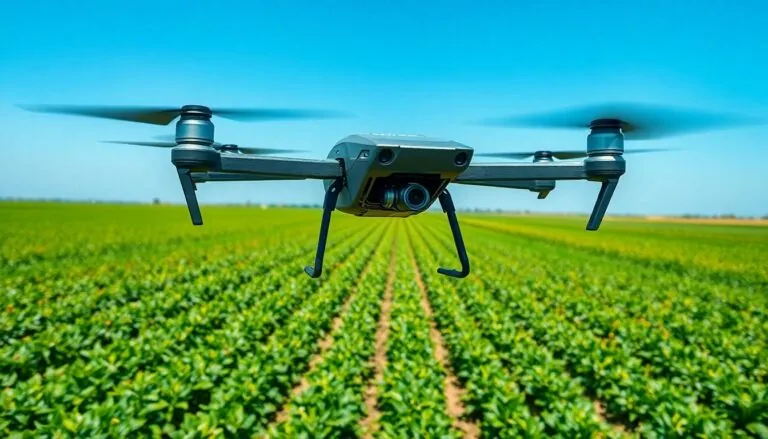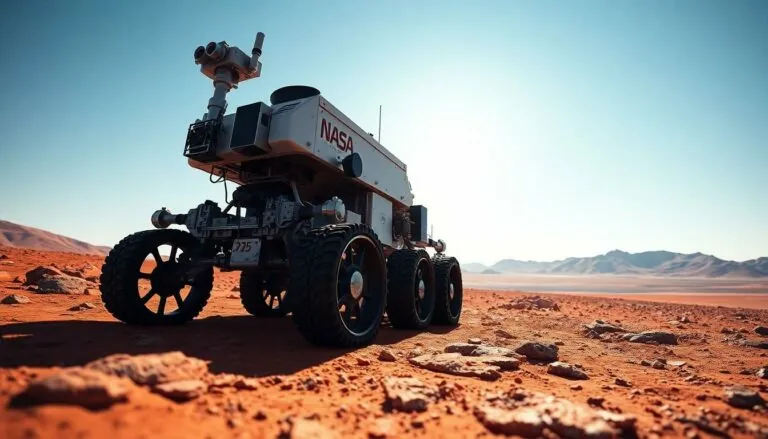Table of Contents
ToggleEver wondered how fast we could zip around the cosmos if we had a spaceship that could outrun a speeding bullet? Well, hold onto your helmets because space travel isn’t quite as speedy as the movies make it seem. With current technology, we’re not exactly breaking any intergalactic speed records.
Overview of Space Travel Speeds
Current spacecraft operate at relatively slow speeds when considering the vast distances in space. The Speed of Light serves as a universal benchmark, traveling at approximately 186,282 miles per second. Yet, no human-made object has approached this speed.
The Parker Solar Probe currently holds the record for the fastest spacecraft, reaching speeds over 430,000 miles per hour as it approaches the Sun. New Horizons, which conducted the flyby of Pluto, traveled at 36,000 miles per hour, showcasing the capabilities of current technology.
Saturn V, used during the Apollo missions, achieved speeds of 17,500 miles per hour to escape Earth’s gravity. SpaceX’s Crew Dragon spacecraft, designed for orbital missions, operates at speeds around 17,500 miles per hour, similar to other vehicles in low Earth orbit.
Interstellar travel remains a theoretical concept. Concepts like the Breakthrough Starshot aim to send tiny spacecraft to Alpha Centauri at 15 to 20 percent the speed of light. Other propulsion technologies, such as ion propulsion, exist but deliver much lower thrust, typically measuring in millinewtons.
Current propulsion methods like chemical propulsion, while reliable, face limitations in velocity over long distances. The vastness of space combined with these speed limitations highlights significant challenges in achieving rapid space travel. Continuous advancements in technology may eventually enable higher speeds, yet current constraints dictate a slower pace.
Current Technology in Space Exploration

Current technology includes a variety of propulsion methods used in space exploration. These methods face challenges in achieving high speeds necessary for rapid travel across vast distances.
Chemical Rockets
Chemical rockets remain the most widely used propulsion system in space missions. Saturn V, the rocket used in the Apollo missions, achieved speeds of 17,500 miles per hour to escape Earth’s gravity. SpaceX’s Crew Dragon also matches this speed during its orbital missions. The principle behind chemical rockets involves the combustion of fuel, which produces thrust. While these rockets are reliable, they come with limitations in terms of velocity and fuel efficiency for long journeys. The need for significant fuel reserves restricts their practicality for deep space exploration.
Ion Propulsion Systems
Ion propulsion systems offer another technological approach, focusing on efficiency over raw power. Unlike chemical rockets, ion engines generate thrust by expelling ions at high speeds. Though they produce much lower thrust, these engines can operate for extended periods. Missions like NASA’s Dawn spacecraft utilized ion propulsion, showcasing its potential for deep space travel. Speeds achieved by ion propulsion, around 90,000 miles per hour, show promise. However, achieving the necessary acceleration for quick launch still poses challenges. As development continues, these systems might play a pivotal role in future missions beyond our solar system.
Historical Context of Space Travel Speeds
Space travel has evolved significantly since its inception. Early missions set the groundwork for modern exploration, shaping our understanding of propulsion and distance.
Early Space Missions
The launch of Sputnik 1 in 1957 marked humanity’s first entry into space. During this mission, the Soviet Union achieved a speed of approximately 18,000 miles per hour. Following Sputnik, the United States launched Explorer 1 at a similar velocity. The Mercury and Gemini programs followed, focusing on human spaceflight, achieving speeds up to 17,500 miles per hour. Notably, Apollo missions, including Apollo 11, reached similar velocities to escape Earth’s orbit. Each mission provided insights into the challenges of speed and distance, setting the stage for future advancements.
Advances in Technology
Technological improvements transformed space travel. The introduction of the Space Shuttle allowed for reusable spacecraft, which operated at around 17,500 miles per hour. Delta IV and Falcon 9 rockets represent further advancements, achieving increased reliability and efficiency for orbital missions. In addition, the Parker Solar Probe exemplified a leap in technology, boasting speeds exceeding 430,000 miles per hour towards the Sun. Ion propulsion systems, while less powerful in terms of thrust, offered efficiency gains for long-duration missions. These advancements illustrate a trajectory of increasing ambition and potential in the quest for faster space travel.
Future Possibilities
Future advancements in space travel rely on innovative propulsion methods and ongoing research. These developments may significantly influence how fast humanity can traverse the cosmos.
Proposed Propulsion Methods
Innovative propulsion methods are essential for enhancing space travel speed. One area of exploration focuses on nuclear thermal propulsion, which utilizes nuclear reactions to produce thrust. Another promising approach involves solar sails, using sunlight for movement. Fusion propulsion, which harnesses nuclear fusion reactions, holds great potential for high-speed travel. Electromagnetic propulsion systems also show promise, utilizing magnetic fields to accelerate spacecraft. Each of these methods aims to significantly improve travel times, bringing distant celestial bodies closer to reach.
The Role of Research and Innovation
Research and innovation play crucial roles in shaping the future of space exploration. NASA and private companies are actively developing new technologies to overcome existing limitations. Notable projects such as the Artemis program focus on lunar exploration, paving the way for deeper space missions. Collaborative efforts with universities and research institutions also drive advancements. Continuous investment in innovation could lead to breakthroughs that redefine human capabilities in space travel. Enhanced materials, improved safety measures, and more efficient systems collectively contribute to achieving ambitious speed goals.
Challenges of Fast Space Travel
Fast space travel encounters multiple challenges, including distance, time, safety, and sustainability.
Distance and Time Considerations
Achieving faster space travel involves navigating immense distances. The nearest star system, Alpha Centauri, lies about 4.37 light-years away. Current spacecraft would take thousands of years to reach it at their maximum speeds. Even the record-setting Parker Solar Probe requires extensive time to complete missions within our solar system. Travel to Mars, for instance, can take six to nine months depending on orbital positions. Each journey must consider the vast emptiness of space, leading to longer durations for exploration missions.
Safety and Sustainability
Ensuring safety and sustainability becomes crucial with increased speed. High speeds raise the risk of collisions with space debris, which could prove catastrophic. Travel in space also necessitates reliable life-support systems, as any malfunction could endanger the crew. Moreover, long-duration missions challenge the sustainability of resources like food and water. Implementing solutions for recycling and maintaining renewable supplies remains essential for the future of deep-space travel. Designing spacecraft to protect against radiation and other hazards is vital for the safety of astronauts.
The journey into space is a testament to human ingenuity and ambition. While current technology allows for some impressive speeds, the reality is that we’re just scratching the surface of what’s possible. The challenges of distance and safety remain significant hurdles that must be addressed.
As researchers and engineers continue to innovate, the potential for faster travel is on the horizon. Future propulsion methods could revolutionize our approach to space exploration, making distant celestial bodies more accessible. With ongoing investment in technology and collaboration across various sectors, the dream of rapid space travel is slowly becoming a more tangible reality. The quest for speed in space is far from over, and the next breakthroughs could redefine our understanding of the cosmos.




